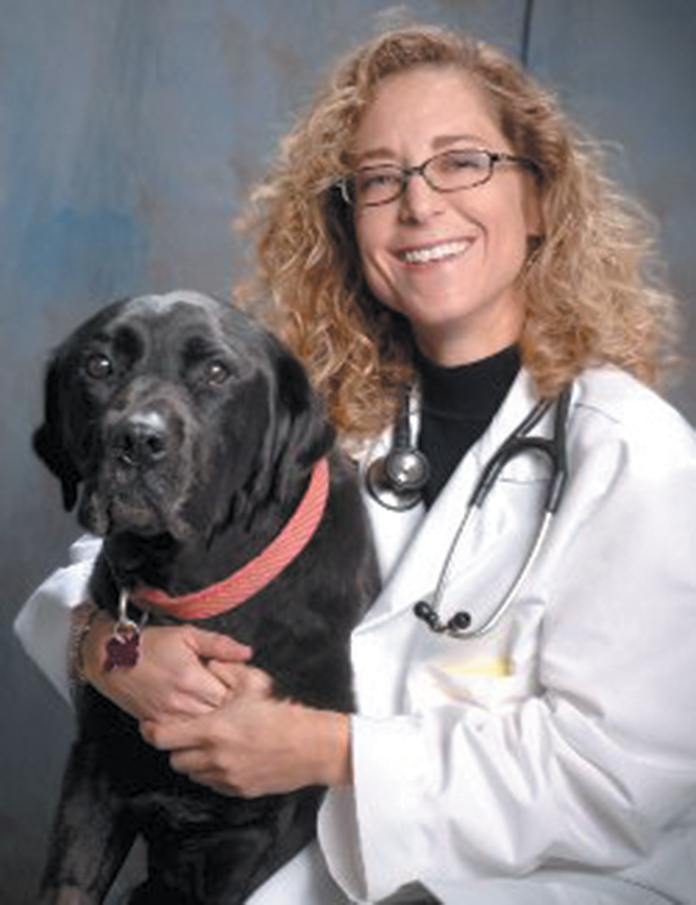It used to be a breast cancer patient was a breast cancer patient,” says Tufts veterinary oncology researcher Cheryl London, DVM, PhD. “But now we know there are so many subsets. Care has become more individualized” to more effectively attack the particular cancer in a person’s body.
Veterinary medicine has lagged behind human medicine in this regard, a significant issue in that an estimated 50 percent of all dogs over the age of 10 develop cancer. But research is starting to close the gap. “The biggest advance in the last couple of years has been the ability to sequence canine tumor genomes,” Dr. London says. If you can understand the genetic basis of cancer, you can identify the best treatment. You can also “leverage genetic data to develop early detection tests and thereby” treat the cancer more effectively when it’s not as far along, she explains.
Dr. London is part of a team of investigators who recently sequenced the genetic blueprint for canine bone cancer (osteosarcoma), a particularly aggressive cancer for which current treatment typically buys dogs no more than one year of life.
Why the genetics of cancer is key
“Cancer is inherently a disease of DNA,” says Dr. London. When mutations develop in tumor cells as they develop and grow, “the DNA becomes progressively more disrupted.” But it will get disrupted differently from dog to dog, and if we understand how, it will lead to better interventions. She uses Legos to draw an analogy.
“If you have a set of 200 Legos and the box shows they can build a car, everybody’s going to build the car a little bit differently; their signature will be slightly different. Everyone will end up with an automobile, but there will be variations. Maybe the blue Legos will always form the core and follow a certain pattern, but the other blocks around them will be different. So if you have only a single treatment for canine osteosarcoma, it may work for some dogs, but not every dog,” Dr. London says. If, on the other hand, you can understand the potential ways in which the Lego car can be built (that is, all the different types of mutations in the DNA that can cause osteosarcoma to develop), you can begin to work on new possibilities for early detection and treatments that are more individualized.
Regarding cancer detection
“We often detect cancer late in the course of the disease,” Dr. London points out. “By the time we find it, it’s pretty advanced — harder to treat. But by understanding at the genetic level the mechanisms that are driving a certain kind of cancer, we can monitor for mutations in patients at risk.
“Part of the ongoing work is focused around what we call liquid biopsy — using blood samples to check for tumor DNA. Tumors shed their DNA into the bloodstream, so knowing the DNA enables you to look for it, detect it. It’s a whole new, rapidly expanding field that could help take the place of always having to do a more invasive biopsy.”
Improvements in genetic detection have in fact allowed researchers at the North Carolina State College of Veterinary Medicine to begin work on developing a way to screen dogs at risk for bladder cancer much earlier in the game. It used to be that the first signs of the disease were clinical manifestations like trouble urinating or blood in the urine. Now, investigators are honing in on screening urine for mutated DNA to identify cancer much sooner. Once the test is perfected, bladder cancer in breeds at high risk for the disease (including Scottish terriers, West Highland terriers, beagles, and Shetland sheep dogs) will be detected and then treated long before the tumor has had a chance to grow and potentially spread to other body tissues.
What’s good for the dog is good for the human
“Typically, strides in human medicine trickle down to veterinary medicine,” Dr. London says. “But anti-cancer efforts between the two species have become much more coordinated over the last couple of years, with veterinary cancer researchers and human cancer researchers being able to look at and integrate their databases. There’s an intersection point,” as she puts it, “allowing researchers from canine and human medicine to do a lot more cross-species cancer medicine.
“By integrating these efforts, we’ll be able to move things forward more on the canine side by leveraging the resources that have already been developed on the human side,” at the same time using findings on dogs to further our understanding of how to detect and treat human cancers. “Helping both species is the goal,” she says.





